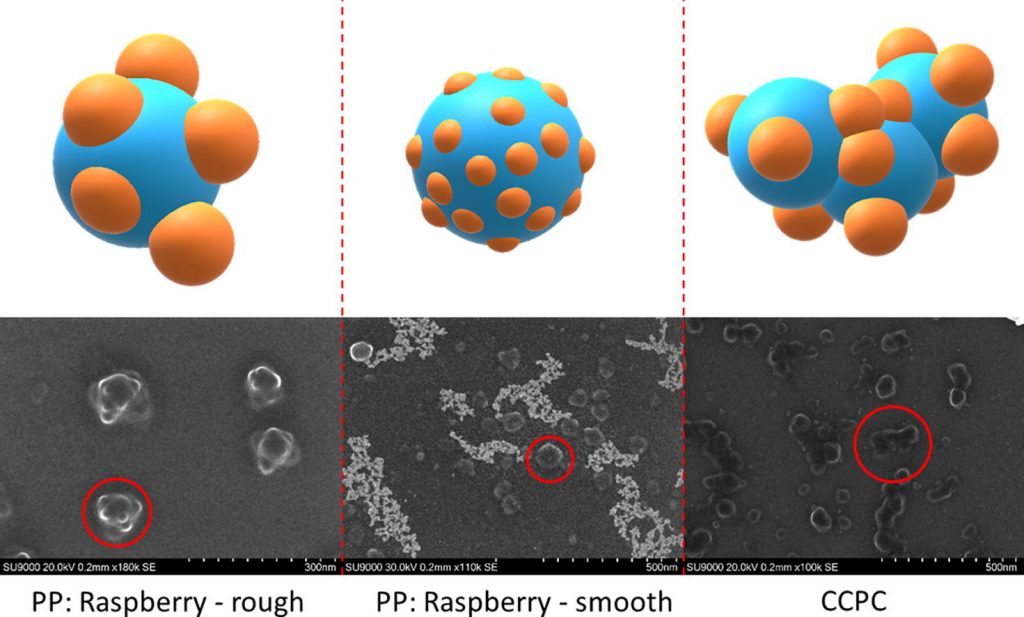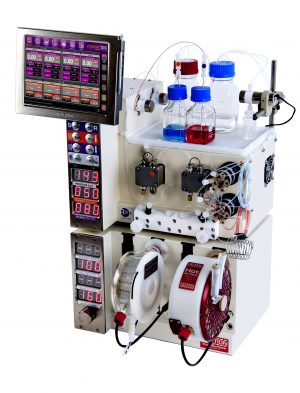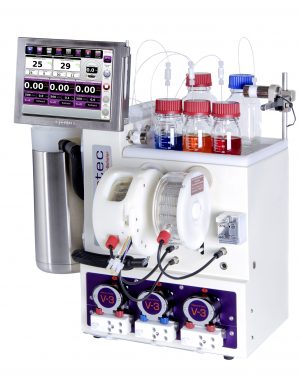Multicompartment polymeric colloids from functional precursor Microgel: Synthesis in continuous process
- aDWI – Leibniz-Institute for Interactive Materials e.V, Forckenbeckstraße 50, 52074 Aachen, Germany
- bInstitute of Technical and Macromolecular Chemistry, RWTH Aachen University, Worringerweg 2, 52074 Aachen, Germany
- cAachen-Maastricht Institute for Biobased Materials (AMIBM), Maastricht University, Urmonderbaan 22, 6167 RD Geleen, The Netherlands
- dZuyd University of Applied Sciences, Nieuw Eyckholt 300, 6419 DJ Heerlen, The Netherlands
- eJülich Centre for Neutron Science (JCNS-1), Forschungszentrum Jülich GmbH, Wilhelm-Johnen-Straβe, 52428 Jülich, Germany
- fCNRS, UMR 8232 – IPCM – Institut Parisien de Chimie Moléculaire – Polymer Chemistry Team, Sorbonne Université, 4 Pl. Jussieu, 75005 Paris, France
 Read the publication that featured this abstract
Read the publication that featured this abstractRaspberry-like poly(oligoethylene methacrylate-b-N-vinylcaprolactam)/polystyrene (POEGMA-b-PVCL/PS) patchy particles (PPs) and complex colloidal particle clusters (CCPCs) were fabricated in two-, and one-step (cascade) flow process. Surfactant-free, photo-initiated reversible addition-fragmentation transfer (RAFT) precipitation polymerization (Photo-RPP) was used to develop internally cross-linked POEGMA-b-PVCL microgels with narrow size distribution. Resulting microgel particles were then used to stabilize styrene seed droplets in water, producing raspberry-like PPs. In the cascade process, different hydrophobicity between microgel and PS induced the self-assembly of the first formed raspberry particles that then polymerized continuously in a Pickering emulsion to form the CCPCs. The internal structure as well as the surface morphology of PPs and CCPCs were studied as a function of polymerization conditions such as flow rate/retention time (Rt), temperature and the amount of used cross-linker. By performing Photo-RPP in tubular flow reactor we were able to gained advantages over heat dissipation and homogeneous light distribution in relation to thermally-, and photo-initiated bulk polymerizations. Tubular reactor also enabled detailed studies over morphological evolution of formed particles as a function of flow rate/Rt.
Get in touch
For more information on flow chemistry systems and services please use the contact methods below.
Call us on +44 (0)1284 728659 or Email us
Resource Centre
R-Series

The Vapourtec R-Series is, quite simply, unrivalled for flow chemistry
- Flexible |
- Precise |
- Automatable
The R-Series is undoubtedly the most versatile, modular flow chemistry system available today.
E-Series

The Vapourtec E-Series is the perfect introductory system for flow chemistry
- Robust |
- Easy to use |
- Affordable
The E-Series is a robust and affordable, entry level flow chemistry system designed for reliability and ease of use.
